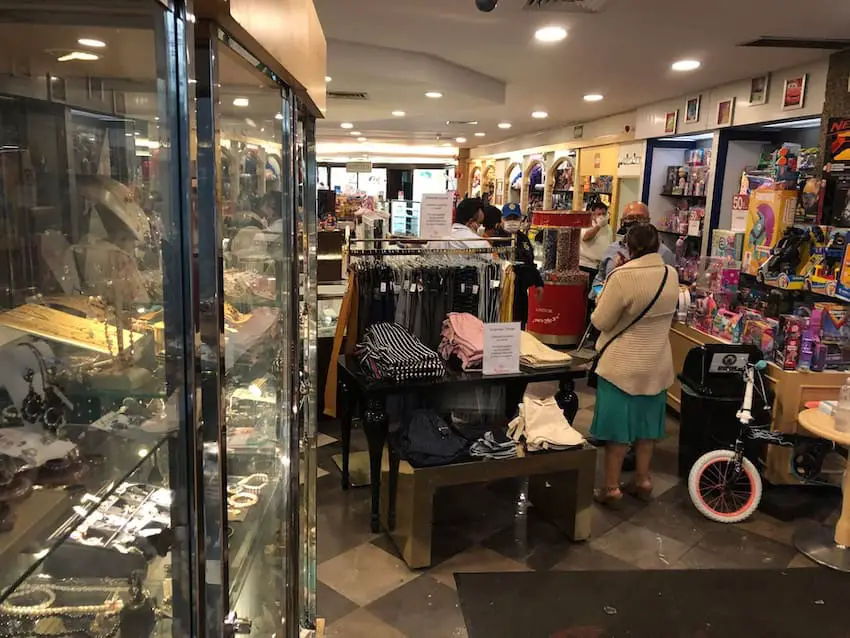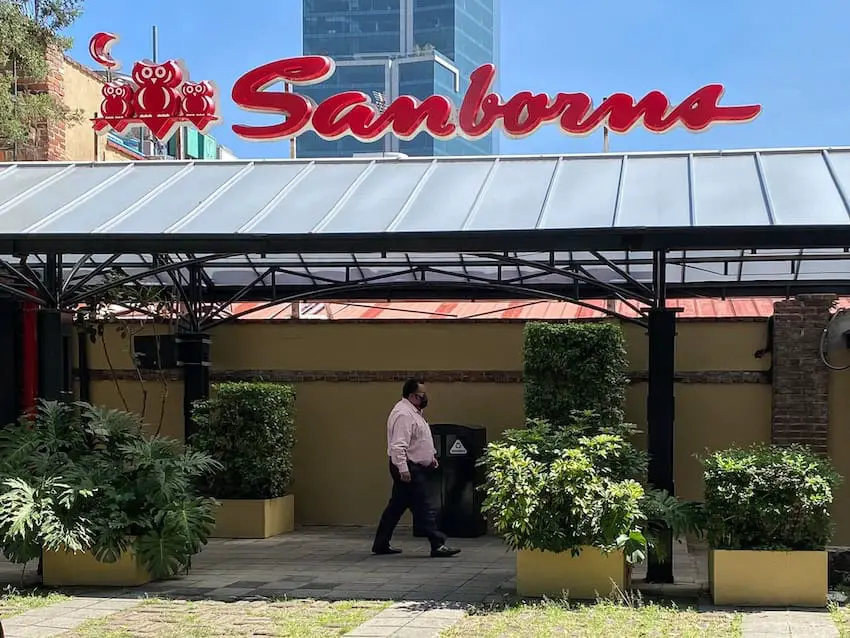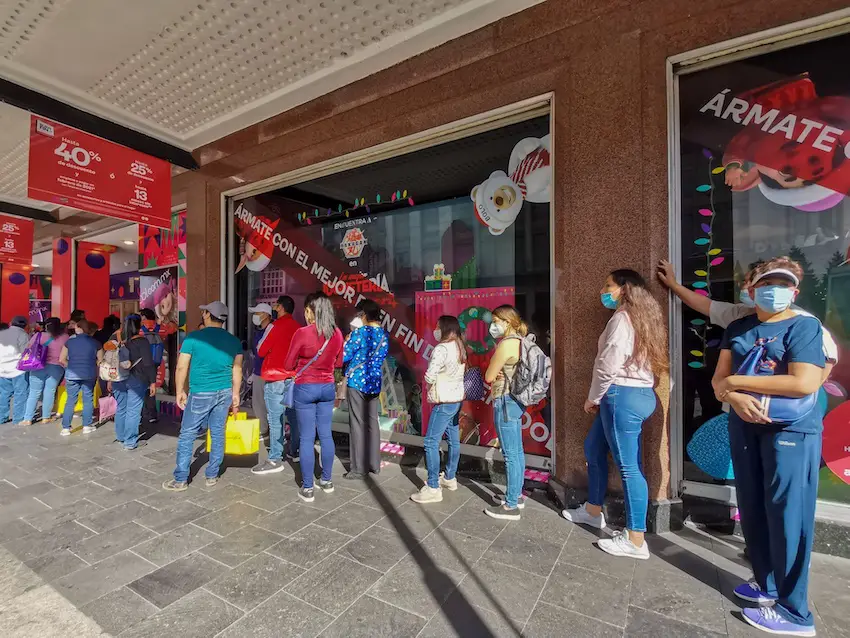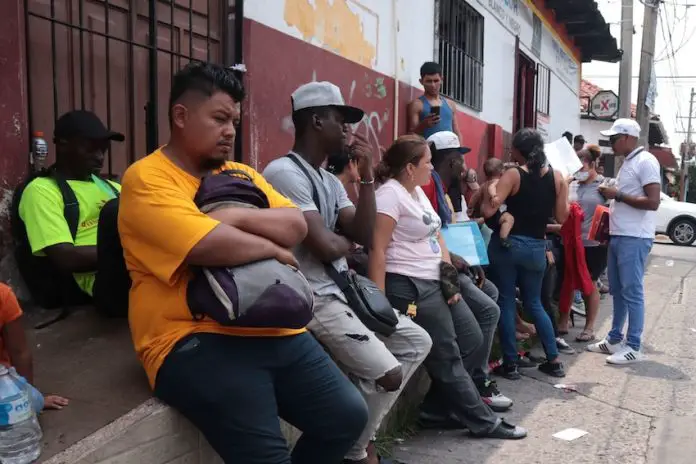Queuing in Mexico is a dark art. A fine art. An art that takes years to hone, like Dutch master before an easal. Yesterday at Sanborns, I stood patiently in front of the pharmacy counter, waiting to be helped.
It’s like I never learn.

What’s something else that gives us away as North Americans? We stand in line, and we expect others to stand in line, too. We also expect to be noticed and rewarded for our good standing-in-line behavior. Order, foolishly for me, is the expectation. But it’s not necessarily a fair one.
Back to Sanborns. Admittedly, I was pre-irritated. I’d taken my daughter and her extremely hyper, scream-y best friend to the mall for video arcade and movie theater fun, and they were wearing on my nerves. When a woman stepped directly in front of me and proceeded to be helped, I piped up.
“Excuse me, where is the actual line here?”
“Oh, we’re getting to people as they come.”
“But how do you know who’s come first? Where should I stand to make it clear?”

At this point, the woman who’d stepped in front of me stepped aside and said, “Oh, I’m sorry, were you waiting on her?”
I thanked her, happy she understood and feeling a little sheepish about my visible bad mood. I was finally able to buy the face cream I’d been clutching, and we went on our way.
If you’ve been in Mexico any amount of time, you’ve surely noticed that there are different rules when it comes to waiting one’s turn. The rule is mainly that the rules are not strictly observed. Those serving people say, at a counter, will typically help whoever has put themself in front of them and begun speaking.
If you need to be helped, this is a tough country to be shy in. “The squeaky wheel gets the oil”, so sometimes you’ve got to start squeaking!
The correct way to stand in line in Mexico
Fortunately, there are polite ways to “squeak”. Let’s start with pharmacies and consultorios (doctor offices), though it can work anywhere with a reception area. When there’s a counter or a reception desk, simply make eye contact with someone on the other side and say “buenos días” (or tardes or noches, depending). This is what I should have done at Sanborns, by the way.

Anyway! You’ve made contact and let them know you’re there. If they look at you expectantly, that’s your cue to start asking for what you want. Once they know, they can either help you or give you instructions to be helped. Easy!
For longer lines, especially when it comes to dreaded trámites, things can get a little more complicated. At both my local immigration and Hacienda offices, for example, lines are visible. However, getting in back of them right away is not the best move, and could waste a lot of your time.
If you have an appointment especially, but even if you just want information, find the security guard. Not only are they helping to keep order, but they let you know where to go and what to do. They’re often the first line of defense for information-giving, so let them be your first stop!
At my immigration office, for example, they direct me to sign a book and write down the purpose of going; only then do I get in line. At Hacienda, the guard will direct you to which line you need to stand in, or where to go and simply sit down to wait.
Do’s and don’ts in customer service offices
At banks and other customer service-oriented offices, there might be a number system. This means you’ll be given, often by a machine that’s sometimes human-assisted, a number that will be called, similar to when you dine in for fast food. When your number is called, it’s your turn! If you think you missed it, though, be sure to ask someone who works there; they can usually help.

The general rule is this: the longer the line and the more impatient the people in it, the less likely it is there will be “cutters”. But if the line is short and there’s a counter-type situation, people are liable to butt in if they can. And if you think that’s bad, just look at people’s behavior in heavy traffic, which is where the above rule does not apply at all: cutters driving cars are rampant, especially when they’re impatient.
Finally, don’t be afraid to stick up for yourself. Some people really are oblivious and in a hurry and just don’t notice others. “Disculpe, estamos formados” (Excuse me, we’re in line) will usually work. Sometimes it won’t, and you can choose whether or not you want to start a fight about it. When you yourself are unsure about the existence of a line — this often happens in bathrooms — simply ask, “¿Están formados?” (Are you in line?)
So remember: squeak with the best of them, and ask for help when you need it. Just don’t cut in line; we’ve got a reputation to keep up!
Sarah DeVries is a writer and translator based in Xalapa, Veracruz. She can be reached through her website, https://sarahedevries.substack.com/
